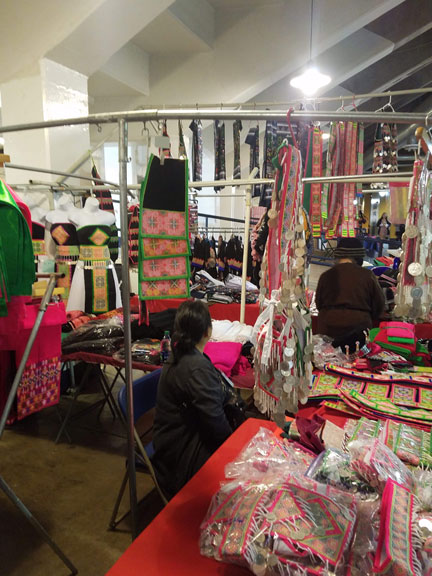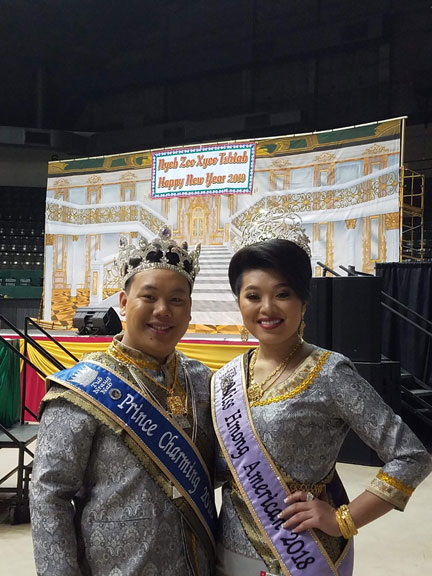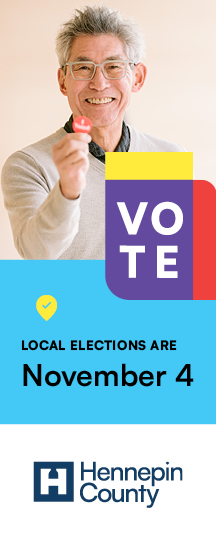Celebrating Hmong Heritage At The 2019 Hmong American New Year
By Aarohi Narain
At the Hmong American New Year commemoration held at the Minnesota State Fair Grounds, members from the Hmong community find a vital platform to celebrate the uniqueness of Hmong history and arts.
At this time of year, as winter begins to set in, the Minnesota State Fair Grounds exude something of a post-apocalyptic vibe. All the shutters are down, the roads are cloaked in translucent, white sleet, and the various acrobatic rides stand completely still – frozen in time. The cherished flavors of midsummer’s deep fried treats – Twinkies, bacon, cream cheese, and green olives, to name only a few – seem lost to memories from another lifetime.
Yet, as you get to the far end of the grounds and approach the Lee and Warner Coliseum, there’s a certain hubbub in the air. Against all odds, even as summer’s spry blossoms perish, there’s the distinct promise of an auspicious renewal, full of vitality, color, and music.
The Hmong American New Year is all about fresh beginnings. It is held annually in St. Paul to mark, according to the Hmong lunar calendar, the coming of the new year. Given the long history of Hmong people – in southeast Asia and the diaspora alike – it is also a dynamic celebration of unique Hmong traditions and heritage. Even in the face of centuries of oppression and ongoing conflicts about the meaning of Hmong-ness, the community continues to thrive and grow in the United States and beyond.
“There are always new people to meet here; people come from all over,” one festival-goer exclaimed. Sure enough, the City of St. Paul is home to the largest Hmong population per capita in the United States, so it should come as no surprise that the Hmong American New Year commemorations are a big deal, and on an international scale, to boot. The festivities draw massive crowds – about 10,000 this year – not only from within the Twin Cities and Minnesota at large, but also from Arkansas, Georgia, Wisconsin, and even as far as Thailand. Falcon Heights’ indoor arena, a living archive of hockey history in Minnesota, transforms, for two days, into a grand theatre where Hmong culture and arts – oratory, song, and dance – take centrestage.
The Hmong American beauty pageant, featuring prominent judges pulled from the Hmong community, is naturally the centre of attention. Hmong men and women compete for the titles of “Prince Charming” and “Miss Hmong American,” donning their very best traditional Hmong clothing, complete with intricate headdresses, layers of waist ties, and silver trinkets that resonate with each step. They are watched over by hundreds of attendees and the erstwhile pageant winners with hopeful, eager eyes.
Dance performances – ranging from rustic, elegant dances focused on the theme of harvest, to more contemporary, ballet-infused choreographies featuring elaborate props and costumes – reflect the wide spectrum of Hmong American talent. Kwv txhiaj, traditional Hmong ballads, also find voice at the celebrations, with both Hmong elders and teenagers tapping their feet to the well-known tunes. In the background, children and adults indulge in the activity of ball-tossing; though originally a kind of courtship ritual, today, it is enjoyed by all.
Outside the main stage area, everyone is just as well-dressed – and hungry. Fortunately, you can find all the Hmong favorites here, including pork belly, sausage, and whole chicken leg served with generous helpings of sticky rice, as well as the classic condiment: Hmong-style chilli dipping sauce that tingles the tongue just as much as it warms the soul.
The food stalls are flanked by dozens of booths – nearly 60 in total – selling traditional Hmong jewelry, clothing, hats, spices and herbs frequently used in Hmong cuisine, books brimming with Hmong folktales written in both Hmong and English, and Hmong music and film CDs. “Hmong people love music,” a vendor said. “It doesn’t matter whether you can sing or not – everyone participates in this festival!”
Indeed, when it comes to the Hmong American New Year, everyone participates. It is an inclusive celebration where young and old, and familiar and unacquainted, are welcomed with open arms. Deep in the heart of the cultural and sociopolitical hub of Hmong life in the United States, the New Year celebration is the vibrant, spirited expression of a shared Hmong identity.
“At this festival, all community members, young and old, can meet each other,” said Mr. Ka Houa Yang, Chairman of the Hmong American New Year celebration, “Together, we can keep our traditions and culture alive – for us and for future generations.”
Photos by Aarohi Narain







